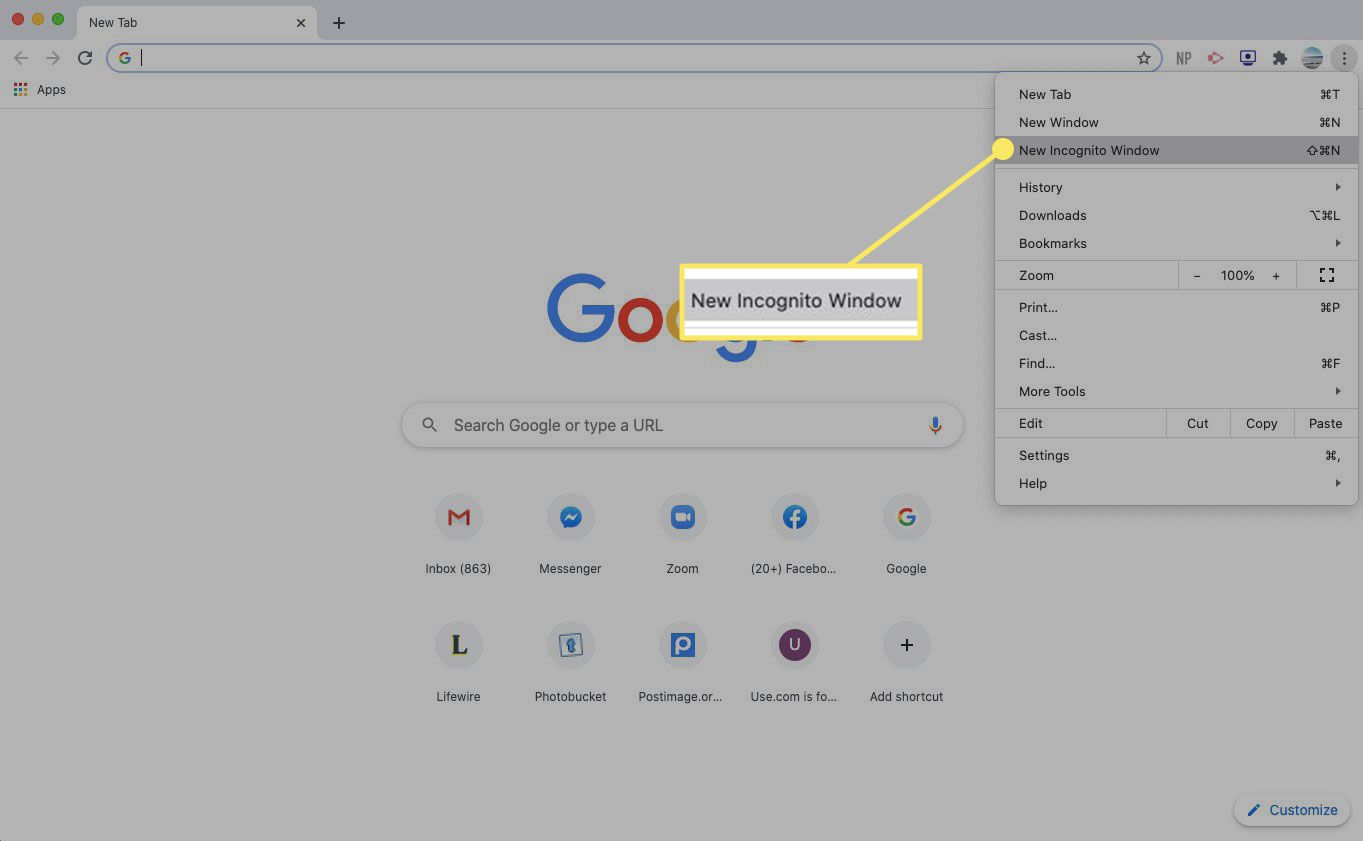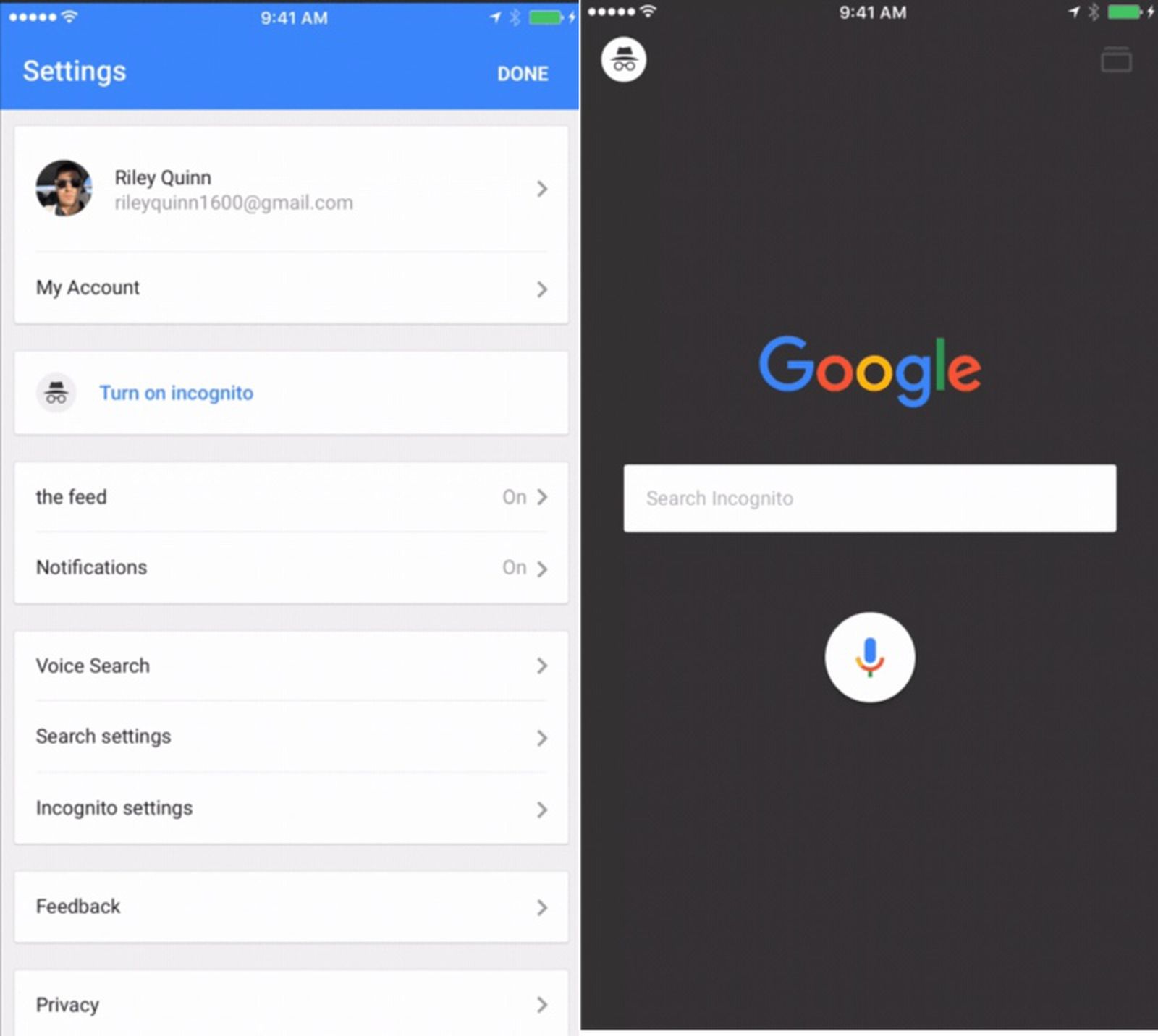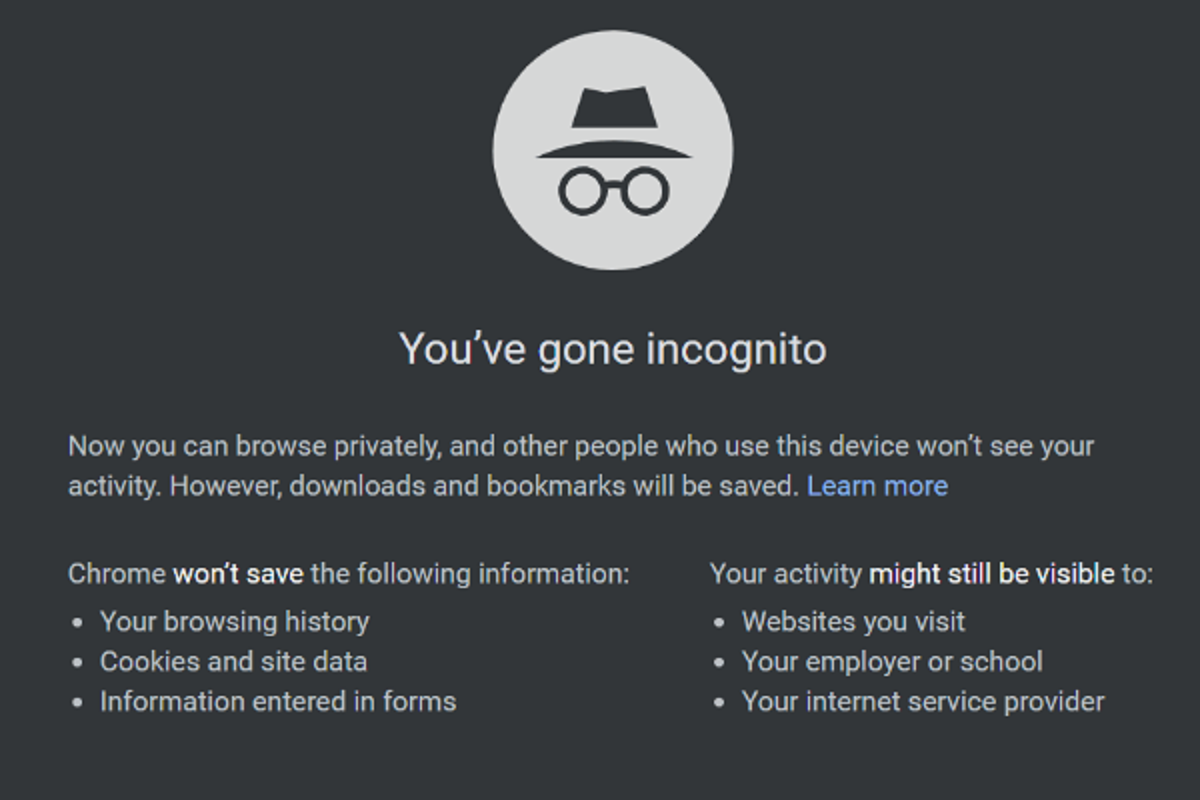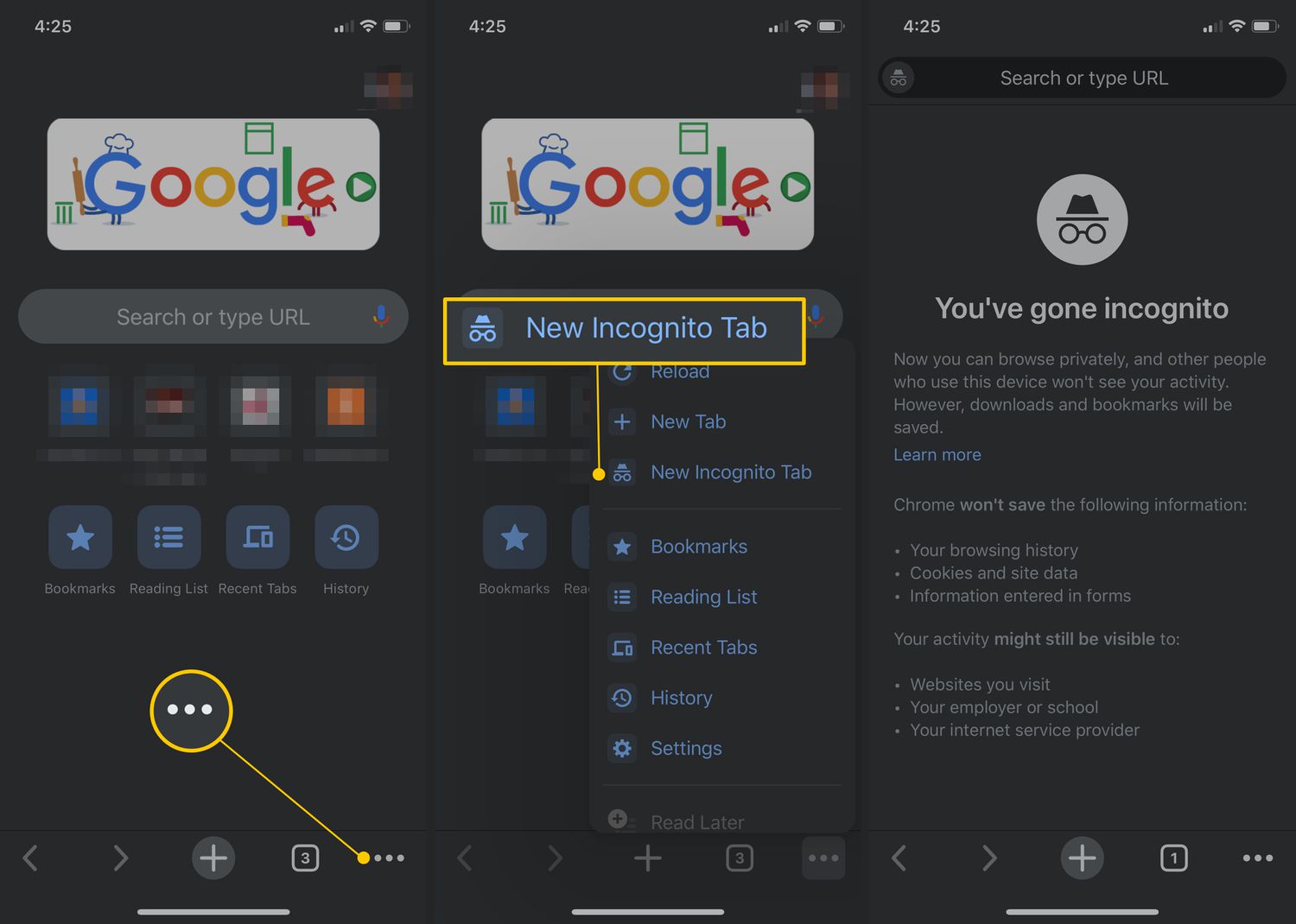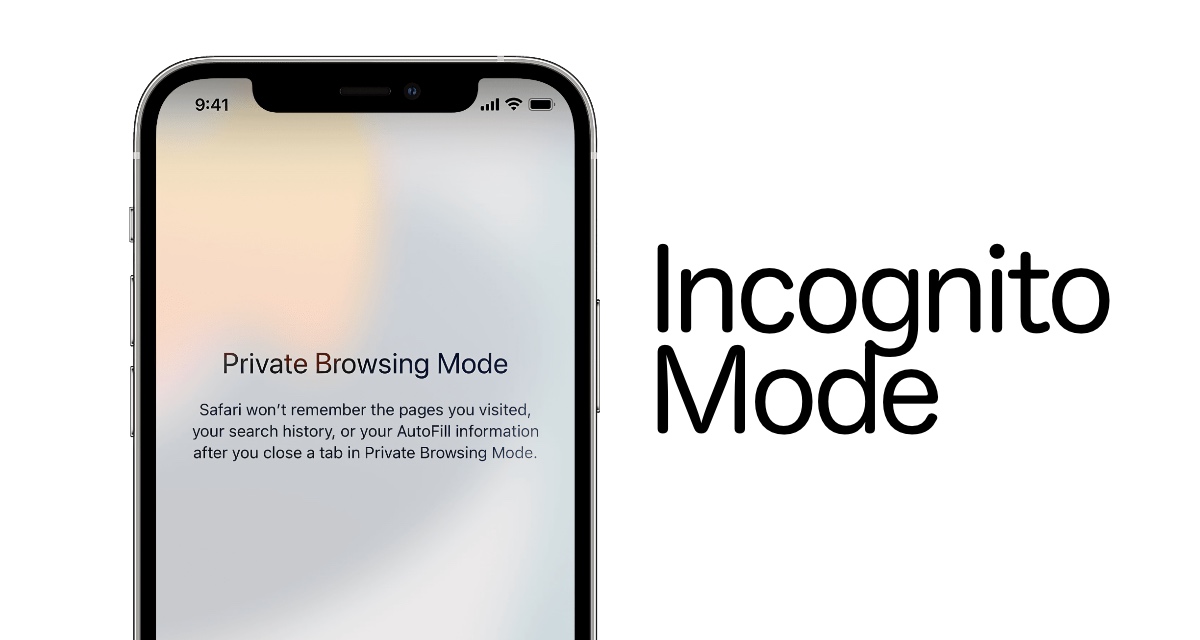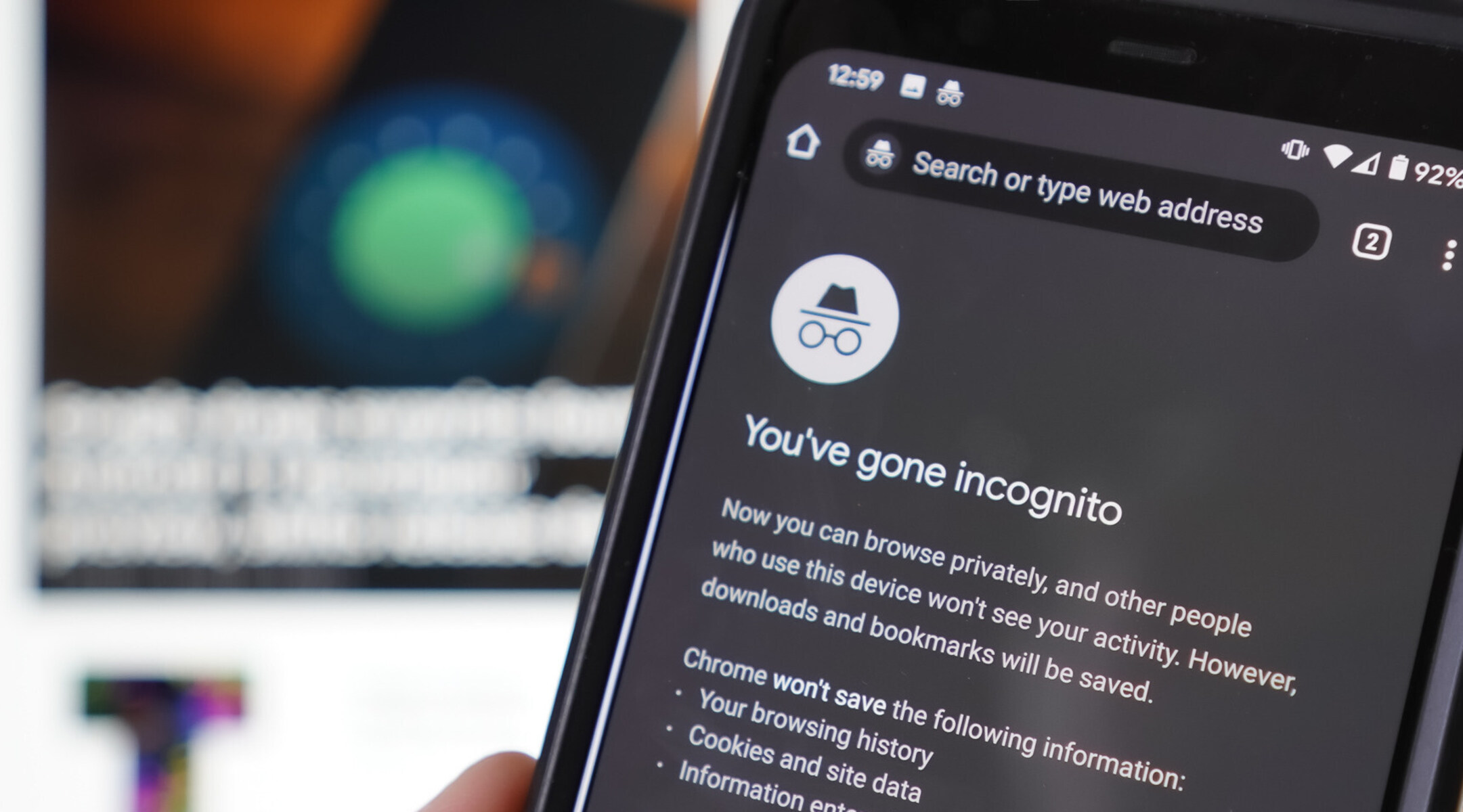What is Incognito Mode?
Incognito mode, also known as private browsing, is a feature available in most popular web browsers that allows users to browse the internet without leaving any traces of their online activities on their device. When you use incognito mode, the browser doesn’t save your browsing history, cookies, site data, or any information you enter on web forms. It provides a way to browse the web privately and securely, protecting your privacy and preventing others from accessing your browsing data.
When you open a new incognito window or tab, it operates separately from your regular browsing session. Any websites you visit, files you download, or bookmarks you create during your incognito session won’t be visible in your browsing history or stored on your device after you close the window or tab. It creates a temporary browsing environment that isolates your internet activity from your regular browsing session.
It’s important to note that while browsing in incognito mode, the pages you visit are still visible to your internet service provider (ISP), employer, or other entities that may be monitoring your internet connection. Incognito mode only prevents your browsing data from being saved locally on your device; it doesn’t provide complete anonymity online.
Incognito mode has become a valuable tool for various internet activities. Whether you’re planning a surprise gift purchase, conducting research on a sensitive topic, or simply want to keep your browsing habits private, incognito mode offers a convenient and secure way to browse the web without leaving behind a digital footprint.
How to Turn on Incognito Mode on Different Browsers
Incognito mode is available in most modern web browsers, making it easy to enable private browsing. Here’s a step-by-step guide on how to activate incognito mode on popular web browsers:
1. Google Chrome
To enable incognito mode in Google Chrome, follow these steps:
- Open Google Chrome on your computer or mobile device.
- Click on the three-dot menu icon in the top-right corner of the browser window.
- Select “New Incognito Window” or press “Ctrl+Shift+N” on your keyboard.
2. Mozilla Firefox
To start a private browsing session in Mozilla Firefox, follow these steps:
- Launch Mozilla Firefox on your computer or mobile device.
- Click on the three-line menu icon in the top-right corner of the browser window.
- Select “New Private Window” or press “Ctrl+Shift+P” on your keyboard.
3. Safari
To open a private browsing window in Safari, follow these steps:
- Open Safari on your Mac or iOS device.
- Click on “File” in the top menu bar.
- Select “New Private Window” or press “Shift+Command+N” on your keyboard.
4. Microsoft Edge
To enable InPrivate browsing in Microsoft Edge, follow these steps:
- Launch Microsoft Edge on your computer.
- Click on the three-dot menu icon in the top-right corner of the browser window.
- Select “New InPrivate Window” or press “Ctrl+Shift+P” on your keyboard.
5. Opera
To activate private browsing in Opera, follow these steps:
- Open Opera on your computer.
- Click on the Opera logo in the top-left corner of the browser window.
- Select “New private window” or press “Ctrl+Shift+N” on your keyboard.
By following these steps, you can easily start an incognito or private browsing session in your preferred browser. Remember that incognito mode only applies to the specific window or tab you open and doesn’t affect your regular browsing session or other open windows.
Google Chrome
Google Chrome, one of the most popular web browsers, offers a simple and straightforward method to enable incognito mode. Here’s how you can do it:
- Open Google Chrome: Launch the Google Chrome browser on your computer or mobile device.
- Access the Menu: Look for the three-dot menu icon located in the top-right corner of the browser window. Click on it to open the menu.
- Select “New Incognito Window”: From the dropdown menu, click on the “New Incognito Window” option. You can also use the keyboard shortcut “Ctrl+Shift+N” (Windows/Linux) or “Command+Shift+N” (Mac) to open a new incognito window.
Once you’ve followed these steps, a new incognito window will open. You can identify the incognito mode by the visual cues, such as the Incognito icon (a person in a hat and glasses) displayed in the top-right corner of the window and the dark color scheme.
In the incognito mode of Google Chrome, you can browse the internet without worrying about the browser storing your browsing history, cookies, or other site data. Any websites you visit and files you download in this mode will not be visible in your browsing history and will not leave any traces on your device. However, it is important to note that your internet service provider (ISP), employer, or other entities may still be able to track your online activities.
It’s worth mentioning that while in incognito mode, certain features may be disabled or limited. For example, extensions and add-ons may be disabled by default. Additionally, websites you visit can still track your activities through techniques like fingerprinting or using your IP address. Hence, if complete privacy is crucial, you may consider using other privacy-enhancing tools in addition to incognito mode.
Overall, Google Chrome’s incognito mode is a useful feature for private browsing, providing users with a hassle-free way to browse the internet without leaving behind any traces on their devices.
Mozilla Firefox
Mozilla Firefox, known for its robust privacy features, allows users to enable incognito mode, or as Firefox calls it, “Private Browsing.” Here’s a step-by-step guide on how to open a private browsing window in Mozilla Firefox:
- Launch Mozilla Firefox: Open the Mozilla Firefox browser on your computer or mobile device.
- Access the Menu: Click on the three-line menu icon located in the top-right corner of the browser window to open the menu.
- Select “New Private Window”: From the dropdown menu, click on the “New Private Window” option. Alternatively, you can use the keyboard shortcut “Ctrl+Shift+P” (Windows/Linux) or “Command+Shift+P” (Mac) to open a new private window.
Once you follow these steps, a new private browsing window will open in Firefox. You can identify the private browsing mode by the purple mask icon displayed in the top-right corner of the window and the dark color scheme.
When browsing in private mode, Firefox will not save your browsing history, search history, cookies, or temporary files. This means that any websites you visit, files you download, or form data you enter will not be stored on your device after you close the private window. However, it’s important to note that your internet service provider (ISP) and other network administrators may still be able to monitor your activities.
Firefox’s private browsing mode also offers other privacy-enhancing features. For example, it blocks third-party tracking cookies, which helps prevent advertisers from tracking your online behavior and delivering targeted ads. Additionally, Firefox provides protection against cryptomining and fingerprinting, which are techniques used to gather information about your computer and online activities.
It’s worth mentioning that certain extensions or add-ons may be disabled by default in private browsing mode to enhance security and privacy. However, you can choose to enable specific extensions if needed.
In summary, Mozilla Firefox’s private browsing mode is a reliable option for browsing the web privately, protecting your data, and mitigating tracking efforts. By following a few simple steps, you can enjoy a more secure and private browsing experience with Firefox’s “New Private Window” feature.
Safari
Safari, the default web browser for Apple devices, offers a built-in feature called “Private Browsing” that allows users to browse the internet without leaving traces of their online activities. Here’s how to open a private browsing window in Safari:
- Open Safari: Launch Safari on your Mac or iOS device.
- Access the Menu: Click on “File” in the top menu bar.
- Select “New Private Window”: From the dropdown menu, choose “New Private Window.” Alternatively, you can use the keyboard shortcut “Shift+Command+N” to open a new private window.
By following these steps, a new private browsing window will open in Safari. You can easily recognize the private browsing mode by the dark color scheme, and you won’t see your browsing history displayed in the browser’s sidebar.
Private browsing mode in Safari ensures that your browsing history, website data, and searches are not saved on your device. When you close the private window, Safari automatically deletes all the browsing information associated with that session, leaving no trace behind. However, it’s important to note that your internet service provider (ISP) and other network administrators may still be able to monitor your online activities.
While browsing privately in Safari, some features may be limited or disabled to enhance your privacy and security. For instance, some websites may not remember your login details, and extensions might be disabled by default. Safari also blocks third-party cookies that track your online behavior, offering an additional layer of privacy protection.
It’s worth mentioning that Safari provides a feature called “Per-site Privacy Settings” that enables you to change the privacy settings for specific websites. You can access this feature by clicking on the “Safari” menu, selecting “Preferences,” and then navigating to the “Websites” tab.
In summary, Safari’s Private Browsing mode is a convenient and secure way to protect your privacy while browsing the internet. Whether you’re using Safari on your Mac or iOS device, enabling private browsing is a simple process that provides you with a confidential browsing experience, leaving no trace of your online activities on your device.
Microsoft Edge
Microsoft Edge, the default web browser for Windows 10, offers a feature called “InPrivate Browsing” that allows users to browse the web privately and without leaving behind any traces. Here’s how you can enable InPrivate Browsing in Microsoft Edge:
- Launch Microsoft Edge: Open the Microsoft Edge browser on your computer.
- Access the Menu: Click on the three-dot menu icon located at the top-right corner of the browser window.
- Select “New InPrivate Window”: From the dropdown menu, choose “New InPrivate Window.” You can also use the keyboard shortcut “Ctrl+Shift+P” to open a new InPrivate window.
Once you’ve followed these steps, a new InPrivate window will open in Microsoft Edge. You can identify the InPrivate mode by the blue “InPrivate” label displayed in the top-left corner of the window and the dark color scheme.
When browsing in InPrivate mode, Microsoft Edge will not store any browsing history, cookies, or temporary files. This means that any websites you visit, files you download, or form data you enter during your InPrivate browsing session will not be saved on your device after you close the InPrivate window. However, it’s important to note that while InPrivate mode helps protect your privacy from other users of your device, it does not provide complete anonymity as your internet service provider (ISP) and other network administrators may still be able to track your online activities.
In addition to preventing the browser from storing your browsing data, InPrivate mode in Microsoft Edge also disables extensions and other enhancements by default to enhance your privacy and security. However, you have the option to enable specific extensions if needed.
It’s worth noting that while InPrivate Browsing can provide a level of privacy during your browsing session, your online activities can still be tracked by websites and services you interact with. To further enhance your privacy, you may consider using additional privacy tools, such as VPN services or other privacy-focused browser extensions.
In summary, Microsoft Edge’s InPrivate Browsing feature offers a convenient way to browse the web privately, preventing your browsing history and other data from being stored on your device. It’s an effective tool for maintaining your privacy during online activities and ensuring that no traces are left behind after you finish your session.
Opera
Opera, a popular browser known for its built-in privacy features, offers a private browsing mode called “Private Window” or “Private Tab.” Here’s how you can enable private browsing in Opera:
- Open Opera: Launch the Opera browser on your computer.
- Access the Menu: Click on the Opera logo located in the top-left corner of the browser window.
- Select “New private window” or “New private tab”: From the dropdown menu, choose either “New private window” or “New private tab.” Alternatively, you can use the keyboard shortcut “Ctrl+Shift+N” to open a new private window or “Ctrl+Shift+T” to open a new private tab.
After you follow these steps, a new private window or tab will open in Opera, depending on the option you chose. You can identify the private browsing mode by the dark color scheme and the mask icon displayed in the top-right corner of the window or tab.
When you browse in private mode in Opera, the browser won’t store your browsing history, cookies, or temporary files. Any websites you visit, files you download, or login credentials you enter during your private browsing session will not be stored on your device after you close the private window or tab. However, it’s important to note that your internet service provider (ISP) and other network administrators may still be able to monitor your activities.
Similar to other browsers, Opera also disables extensions and certain features by default in private mode to enhance your privacy and security. Nevertheless, you have the option to enable specific extensions if desired.
Opera offers additional privacy-enhancing features, such as a built-in ad blocker and tracking protection. These features help block ads and prevent websites from tracking your online behavior, further enhancing your privacy while browsing privately.
It’s essential to remember that while private browsing provides a level of privacy during your browsing session, it does not guarantee complete anonymity on the internet. Websites you visit can still gather information about your activities using techniques like fingerprinting or tracking your IP address. To enhance your privacy further, you may consider using a virtual private network (VPN) or other privacy-focused tools in conjunction with Opera’s private browsing mode.
In summary, Opera’s private browsing mode is a valuable tool for browsing the web privately and securely. By following a few simple steps, you can enjoy a private browsing experience, ensuring that your browsing history and other data are not stored on your device.
Benefits of Using Incognito Mode
Incognito mode, or private browsing, offers several benefits that can enhance your online experience and protect your privacy. Here are some of the key advantages of using incognito mode:
1. Privacy Protection: The primary advantage of incognito mode is the ability to browse the internet without leaving behind any traces of your online activities. It prevents your browsing history, cookies, and site data from being stored on your device. This helps protect your privacy, especially when using a shared or public computer.
2. Confidentiality while Researching: Incognito mode is particularly useful when conducting research on sensitive topics or browsing websites that you don’t want to be linked to your regular browsing history. By using incognito mode, you can freely explore any subject matter without worrying about the information being recorded.
3. Security against Tracking: Incognito mode can limit certain tracking techniques used by websites and advertisers. It prevents third-party cookies, local storage, and other tracking tools from gathering information about your online behavior, making it harder for advertisers to track your interests and display targeted ads.
4. Multiple Account Management: Incognito mode allows you to log in to multiple online accounts simultaneously without conflicts or having to sign out and sign back in repeatedly. This can be especially useful when you want to check different email accounts, social media profiles, or online platforms simultaneously.
5. Testing or Troubleshooting: If you’re a web developer or a regular user who wants to test a website with a clean slate, incognito mode can be helpful. It allows you to visit a website without any stored preferences, cached files, or extensions, providing a more accurate representation of how the website performs.
6. Online Shopping and Surprises: Incognito mode can be handy for online shopping when you’re looking for deals or comparing prices without leaving behind a browsing history. It can also help keep gift purchases a secret from others who may have access to your computer or device.
7. Avoidance of Personalized Results: Using incognito mode can help you see search results without being biased by previous queries or browsing habits. It prevents search engines from personalizing the results based on your past interactions, ensuring a more neutral and objective browsing experience.
While incognito mode provides these benefits, it’s important to remember that it doesn’t make you completely anonymous online. Your internet service provider (ISP), employer, or other network administrators may still be able to monitor your online activities. Additionally, incognito mode doesn’t protect against malware, phishing attacks, or other internet threats. Therefore, it’s crucial to maintain other security measures, such as using a reliable antivirus program and practicing safe browsing habits.
How Does Incognito Mode Work?
Incognito mode, also known as private browsing, works by creating a temporary browsing session that isolates your online activity from your regular browsing session. Here’s how incognito mode works and the mechanisms behind its privacy features:
1. Browsing Data Not Saved: When you open an incognito window or tab, the browser will not save your browsing history, cookies, or site data. This means that the websites you visit, files you download, and form data you enter during your incognito session will not be recorded locally on your device.
2. Temporary Sessions: Each time you open a new incognito window or tab, it initiates a separate browsing session. This session remains active until you close the incognito window or tab, and any data generated during that session is discarded once you exit the session.
3. Limiting Tracking: Incognito mode limits the tracking techniques used by websites and advertisers. It prevents the browser from storing and retrieving third-party cookies, which are commonly used to track your browsing behavior across different websites. By blocking these cookies, incognito mode helps protect your privacy and makes it harder for advertisers to target you with personalized ads.
4. No Form Autofill: In incognito mode, your browser won’t remember form data you enter, such as username, password, or address. This prevents the browser from automatically filling in your personal information and offers an extra layer of privacy, especially on shared or public devices.
5. Extension and Add-on Limitations: To enhance security and privacy, most browsers disable or limit extensions and add-ons in incognito mode. This prevents extensions from accessing and storing your data, reducing the risk of data leakage or malicious activity. However, certain essential extensions may still be available for use in incognito mode.
While incognito mode offers several privacy features, it’s important to note that it does not provide complete anonymity or protection from all forms of online tracking. Incognito mode only affects your local browsing session and does not route your traffic through servers or encrypt your connection. Your internet service provider (ISP) and other network administrators may still be able to monitor your online activities.
Additionally, incognito mode does not protect against malware, phishing attacks, or websites that may attempt to collect your personal information. It’s important to maintain other security measures, such as using reliable security software, keeping your browser and operating system up to date, and exercising caution when clicking on suspicious links or downloading files from untrusted sources.
Overall, incognito mode provides a convenient way to browse the web privately, preventing your browsing data from being stored on your device. It’s crucial to understand its limitations and combine it with other security practices for a safer and more private online experience.
Frequently Asked Questions about Incognito Mode
Here are answers to some commonly asked questions about incognito mode, shedding light on its functionality and addressing some misconceptions:
1. Does incognito mode make me anonymous?
No, incognito mode does not make you anonymous online. While it prevents your browsing data from being stored on your device, your internet service provider (ISP) and other network administrators may still be able to monitor your online activities.
2. Can websites track me in incognito mode?
Yes, websites may still track your activities in incognito mode. While incognito mode limits tracking through cookies and other local storage, websites can still collect information through techniques like IP address tracking and browser fingerprinting.
3. Can I use extensions in incognito mode?
Most browsers disable or limit extensions in incognito mode for security and privacy reasons. However, some essential extensions may still work in incognito mode. You can check your browser settings to see which extensions are enabled.
4. Can I save bookmarks in incognito mode?
Yes, you can save bookmarks in incognito mode, and they will be accessible only during your current incognito session. However, once you exit the incognito window or tab, these bookmarks will not be saved or accessible in your regular browsing session.
5. Does incognito mode protect against viruses and malware?
No, incognito mode does not provide protection against viruses, malware, or other online threats. It only prevents your browsing data from being stored locally on your device. To protect against malware, it’s important to use reliable security software and practice safe browsing habits.
6. Can incognito mode bypass paywalls?
No, incognito mode does not bypass paywalls or subscription-based content that requires a login. Websites can still detect that you’re in incognito mode and may restrict access to their content accordingly.
7. Can I use incognito mode on mobile devices?
Yes, incognito mode is available on most mobile browsers. You can access it through the browser’s settings or by using the respective keyboard shortcuts, similar to the desktop versions.
8. Can I use incognito mode for online banking or sensitive transactions?
It’s generally recommended not to use incognito mode for sensitive transactions like online banking. Incognito mode primarily focuses on privacy by preventing the browser from saving data locally. However, it does not provide additional security measures like encryption and protection against keyloggers or malware. It’s best to rely on secure websites and use reliable security software when handling sensitive transactions.
These are just a few frequently asked questions about incognito mode. Understanding its functionality and limitations can help you make informed decisions about when and how to use incognito mode for your browsing needs.
Conclusion
Incognito mode, also known as private browsing, offers users a valuable option to browse the internet privately and securely. It allows you to surf the web without leaving behind a digital footprint in terms of browsing history, cookies, or other site data. While it provides several benefits, it’s important to understand the limitations and misconceptions surrounding incognito mode.
Enabling incognito mode varies slightly across different web browsers, but the concept remains the same. Popular browsers like Google Chrome, Mozilla Firefox, Safari, Microsoft Edge, and Opera all offer a private browsing mode that can be easily activated.
Incognito mode is an effective tool for maintaining privacy when using shared devices, conducting research on sensitive topics, avoiding personalized search results, and managing multiple online accounts simultaneously. It can also be useful for online shopping, surprise gift purchases, and testing websites without cached data interfering with the browsing experience.
However, it’s important to note that incognito mode does not make you completely anonymous online. Your internet service provider (ISP) and other network administrators may still be capable of monitoring your online activities. It also does not protect against malware, phishing attacks, or websites attempting to collect personal information.
To ensure a more secure and private online experience, consider using incognito mode in conjunction with other security measures. This may include using a virtual private network (VPN), reliable security software, keeping your browser and operating system up to date, and practicing safe browsing habits.
In conclusion, incognito mode is a valuable tool for browsing the internet privately and securely. It offers users a degree of privacy by preventing the browser from storing browsing history, cookies, and other data, but it doesn’t provide complete anonymity or protection against all online threats. By understanding the functionality and limitations of incognito mode, you can make informed decisions about when and how to use it for a safer and more private online experience.







